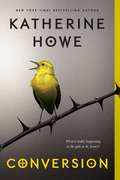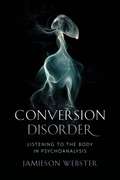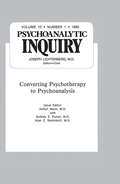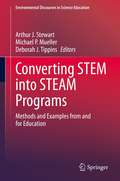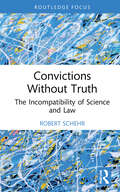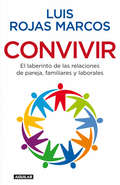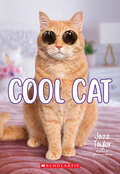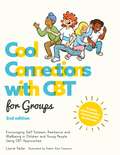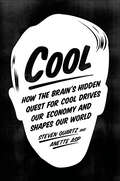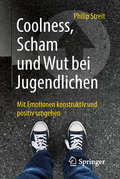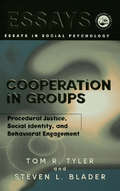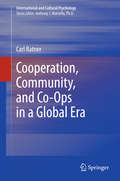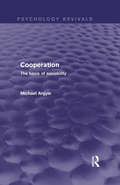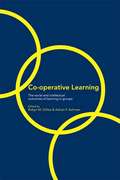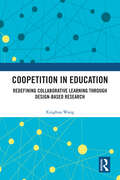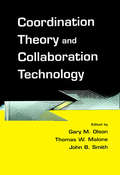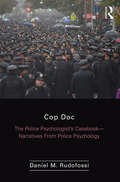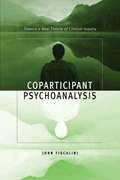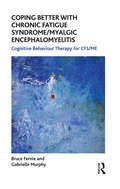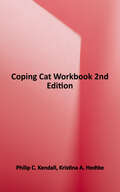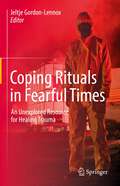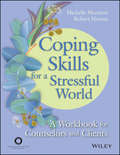- Table View
- List View
Conversion
by Katherine HoweFrom the New York Times bestselling author of The Physick Book of Deliverance Dane comes a chilling mystery—Prep meets The Crucible. It’s senior year at St. Joan’s Academy, and school is a pressure cooker. College applications, the battle for valedictorian, deciphering boys’ texts: Through it all, Colleen Rowley and her friends are expected to keep it together. Until they can’t. First it’s the school’s queen bee, Clara Rutherford, who suddenly falls into uncontrollable tics in the middle of class. Her mystery illness quickly spreads to her closest clique of friends, then more students and symptoms follow: seizures, hair loss, violent coughing fits. St. Joan’s buzzes with rumor; rumor blossoms into full-blown panic. Soon the media descends on Danvers, Massachusetts, as everyone scrambles to find something, or someone, to blame. Pollution? Stress? Or are the girls faking? Only Colleen—who’s been reading The Crucible for extra credit—comes to realize what nobody else has: Danvers was once Salem Village, where another group of girls suffered from a similarly bizarre epidemic three centuries ago . . . Inspired by true events—from seventeenth-century colonial life to the halls of a modern-day high school—Conversion casts a spell. With her signature wit and passion, New York Times bestselling author Katherine Howe delivers an exciting and suspenseful novel, a chilling mystery that raises the question, what’s really happening to the girls at St. Joan’s?
Conversion Disorder: Listening to the Body in Psychoanalysis
by Jamieson WebsterConversion disorder—a psychiatric term that names the enigmatic transformation of psychic energy into bodily manifestations—offers a way to rethink the present. With so many people suffering from unexplained bodily symptoms; with so many seeking recourse to pharmacological treatments or bodily modification; with young men and women seemingly willing to direct violence toward anybody, including themselves—a radical disordering in culture insists on the level of the body.Part memoir, part clinical case, part theoretical investigation, this book searches for the body. Is it a psychopathological entity; a crossroads for the cultural, political, and biological in the form of care; or the foundation of psychoanalytic work on the question of sexuality? Jamieson Webster traces conversion’s shifting meanings—in religious, economic, and even chemical processes—revisiting the work of thinkers as diverse as Benjamin, Foucault, Agamben, and Lacan. She provides an intimate account of her own conversion from patient to psychoanalyst, as well as her continuing struggle to apprehend the complexities of the patient’s body. When listening to dreams, symptoms, worries, or sexual impasses, the body becomes a defining trope that belies a vulnerable and urgent wish for transformation. Conversion Disorder names what is singular about the entanglement of the fractured body and the social world in order to imagine what kind of cure is possible.
Converting Psychoanalysis: Psychoanalytic Inquiry, 10.1
by Arthur MalinFirst published in 1990. Routledge is an imprint of Taylor & Francis, an informa company.
Converting STEM into STEAM Programs: Methods and Examples from and for Education (Environmental Discourses in Science Education #5)
by Michael P. Mueller Deborah J. Tippins Arthur J. StewartThis book examines the push and pull of factors contributing to and constraining conversion of STEM (science, technology, engineering and math) education programs into STEAM (science, technology, engineering, math and arts) education programs. The chapters in this book offer thought-provoking examples, theory, and suggestions about the advantages, methods and challenges involved in making STEM to STEAM conversions, at levels ranging from K12 through graduate university programs. A large driving force for STEM-to-STEAM conversions is the emerging awareness that the scientific workforce finds itself less than ideally prepared when engaging with so-called ‘wicked problems’ – the complex suite of emerging, multifaceted issues such as global climate change, social injustice, and pandemic diseases. Dealing with these issues requires cross-disciplinary expertise and the ability to insert technical and scientific understanding effectively into areas of public planning and policy. The different models and possibilities for STEAM, as the next phase of the STEM revolution, laid out in this book will promote research and further our understanding of STEAM as a forward-thinking approach to education.Gillian Roehrig, STEM Education, University of Minnesota, USAThe ideal teacher sees opportunities for integrating ideas from multiple disciplines into every lesson. This book offers many worthwhile suggestions on how to do that deliberately and systematicallyGeorge DeBoer, Project 2061 of the American Association for the Advancement of Science, USAFor the last several years, calls for expanding STEM education have grown, but so too have concerns about technocratic approaches to STEM. This volume challenges the community to consider broader views on STEM by focusing on the place of arts education within this movement. The chapters offer much needed, new perspectives on the (re)integration of the arts and sciencesTroy Sadler, School of Education, University of North Carolina, USA
Convictions Without Truth: The Incompatibility of Science and Law (Routledge Frontiers of Criminal Justice)
by Robert SchehrConvictions Without Truth sets out to determine whether and to what extent science and law may coexist in an institutional relationship that truthfully generates individualization through application of forensic testimony for charges relating to violations of criminal law. In the first two chapters, readers are exposed to contemporary unscientific forensic practices as juxtaposed to the evidentiary standard announced by the United States Supreme Court in Daubert v. Merrill Dow Pharmaceuticals, as well as scientific requirements for validity and reliability of expert witness testimony. The remaining chapters provide an explanation for retention of existing, though faulty, forensic practices by way of analysis of path dependency, the fixation of belief, and neuro and cognitive psychology. Through immanent critique and unmasking, the book deconstructs prevailing forensic practices through application of existing published documentation. The final chapter addresses the fixation of belief from the perspective of neuropsychology and cognitive psychology. Readers will gain an understanding of the current concerns relating to application of contemporary forensic practices ; current case law and federal rules guiding the introduction of expert witness testimony; and why it is that despite widely recognized concerns raised from within and outside of the criminal legal system, application of unscientific forensic practices continues., The book also shows how the criminal legal system is experiencing a paradigm shift due to dialectical juxtaposition of existing unscientific forensic practices with contemporary science. Readers are shown that because of its continued reliance upon unscientific forensic practices, the criminal legal system reveals its hegemonic commitment to social control through its willingness to accept "satisfying" as opposed to "truthful" results that generate wrongful convictions. Convictions Without Truth will be of particular interest to students, academics, and practitioners working within the criminal legal field. It will also appeal to those wanting to know more about forensics and criminal law.
Convivir: El laberinto de las relaciones de pareja, familiares y laborales
by Luis Rojas MarcosUna obra de gran utilidad a la hora de entender y abordar los conflictos que surgen en nuestra convivencia con aquellos que comparten nuestro mundo cotidiano. Los vínculos de amor y la convivencia armoniosa con otras personas constituyen nuestra fuente primordial de felicidad y son, además, los antídotos más seguros contra las adversidades. Al mismo tiempo, la causa más común de infelicidad radica en la soledad, la pérdida de seres queridos y la descomposición o ruptura de nuestras uniones afectivas. En este interesante y didáctico diálogo con sus lectores, Luis Rojas Marcos expone, con el estilo sencillo y ameno que le caracteriza, los ingredientes esenciales que forjan las relaciones de pareja, de familia y de trabajo; analiza los impedimentos de estas relaciones -ansiedad, dolor, autoestima dañada, trauma emocional, depresión y alergia a la intimidad- y examina los pasos necesarios para afrontar las dificultades y las incompatibilidades que las afligen. Aprender a convivir requiere introspección y una dosis generosa de franqueza, flexibilidad, optimismo y autodisciplina. Una obra de gran utilidad a la hora de entender y abordar los conflictos que surgen en nuestra convivencia con aquellos que comparten nuestro mundo cotidiano. A fin de cuentas, la calidad de nuestra vida es básicamente la calidad de nuestras relaciones.
Cool Cat: A Wish Novel
by Jazz TaylorFrom the author of Meow or Never and Starting From Scratch, a story about friendship, anxiety, and internet culture.Nova doesn’t lie -- she tells hopes for the future. That’s why she tells her mom she got an A on her math quiz, even though she got a B. It’s also why she doesn’t tell her mom about her secret Instagram that she’s almost old enough to have.When a viral video of her cat pushes her into the popular crowd, and next to her crush, Lily, Nova tells even more “hopes for the future” to try to fit in.The more lies she tells, the more everything spins out of control! Nova wants to come clean...but will it mean losing everything?
Cool Connections with CBT for Groups, 2nd edition: Encouraging Self-Esteem, Resilience and Wellbeing in Children and Teens Using CBT Approaches (Cool Connections with CBT)
by Laurie SeilerCool Connections is an early intervention programme for young people aged 9-14, focusing on preventing anxiety and depression. Through using CBT principles, skills adapted from behavioural activation, acceptance and commitment therapy and compassion-based therapies and therapeutic exercises, it encourages the development of resilience, self-esteem and wellbeing, to reduce feelings of anxiety and depression.This new and updated edition gives professionals working with groups everything they need to improve the wellbeing of children. With photocopiable and downloadable illustrated worksheets, it is clearly structured and straightforward to put into practice, and contains new sessions on self-regulation, identifying support networks and mindfulness.
Cool: How the Brain's Hidden Quest for Cool Drives Our Economy and Shapes Our World
by Steven Quartz Anette Asp“This engrossing history merges evolutionary biology and economics to explain our spending habits” and show how coolness is at the heart of consumerism (Mental Floss).We live in a world of conspicuous consumption, where the things we buy not only satisfy our needs, but also communicate our values, identities, and aspirations. In Cool, Steven Quartz and Anette Asp bring together groundbreaking findings in neuroscience, economics, and evolutionary biology to show how our concepts of “cool”—be it designer jeans, smartphones, or craft beer—help drive the global economy.Cool puts forth a provocative theory of consumerism based on our brain’s innate status-seeking and “social calculator”. The authors highlight the underlying processes that guide our often-unconscious decision making. They also pull back the curtain on “choice architects” who design store interiors, as well as “coolhunters” who scour Berlin and Tokyo for the latest trends.Quartz and Asp follow the evolution of “cool consumption” from the mid-twentieth century through the emergence of the Internet in the 1990s, finally unpacking the social motivations behind today’s hip, ethical consumption. Taking us from Norman Mailer to normcore, Cool is surprising at every turn, and will forever change the way you think about money, status, and your next purchase.
Coolness, Scham und Wut bei Jugendlichen: Mit Emotionen Konstruktiv Und Positiv Umgehen
by Philip StreitGeborgenheit, Autonomie und Erfolg, das wünschen sich junge Menschen. In diesem Rahmen entwickeln sie Lösungsversuche, um sich diese grundlegenden psychologischen Bedürfnisse zu erfüllen. Sind diese nicht angemessen, reagiert die Umgebung oft mit abwertenden Reaktionen. Schnell entsteht bei den Jugendlichen Scham. Und: Es ist vor allem der Verlust der Würde, der es für sie so schwer macht. Philip Streit arbeitet seit über 20 Jahren mit jungen Menschen und mit deren Familien. In diesem Buch zeigt er Eltern und interessierten Laien, welche Kraft in Neuer Autorität und Positiver Psychologie steckt, damit Erwachsene respektvoll und präsent an Jugendliche herangehen können, und wie sie diese Scham für gelingende Beziehungen nützen können. Zahlreiche Fallbeispiele und Übungen erleichtern die Umsetzung im Alltag. Die Erfahrung zeigt: Wer das übt und ausprobiert, ist nicht nur von den günstigen Auswirkungen überrascht, sondern auch davon, wie leicht es gelingt.Geschrieben für … Eltern, interessierte Laien; Psychotherapeuten, Psychologen, Ärzte, Schulberater, Lehrer können mitlesen.Der AutorDr. Philip Streit leitet das Institut für Kind, Jugend und Familie in Graz, wo er als Klinischer Psychologe und Psychotherapeut mit Kindern, Jugendlichen und ihren Familien arbeitet. Er ist Autor verschiedener Bücher über Neue Autorität und Positive Psychologie im Alltag mit Kindern und Jugendlichen.
Cooperation Without Trust?
by Margaret Levi Russell Hardin Karen S. CookSome social theorists claim that trust is necessary for the smooth functioning of a democratic society. Yet many recent surveys suggest that trust is on the wane in the United States. Does this foreshadow trouble for the nation? In Cooperation Without Trust? Karen Cook, Russell Hardin, and Margaret Levi argue that a society can function well in the absence of trust. Though trust is a useful element in many kinds of relationships, they contend that mutually beneficial cooperative relationships can take place without it. Cooperation Without Trust? employs a wide range of examples illustrating how parties use mechanisms other than trust to secure cooperation. Concerns about one’s reputation, for example, could keep a person in a small community from breaching agreements. State enforcement of contracts ensures that business partners need not trust one another in order to trade. Similarly, monitoring worker behavior permits an employer to vest great responsibility in an employee without necessarily trusting that person. Cook, Hardin, and Levi discuss other mechanisms for facilitating cooperation absent trust, such as the self-regulation of professional societies, management compensation schemes, and social capital networks. In fact, the authors argue that a lack of trust—or even outright distrust—may in many circumstances be more beneficial in creating cooperation. Lack of trust motivates people to reduce risks and establish institutions that promote cooperation. A stout distrust of government prompted America’s founding fathers to establish a system in which leaders are highly accountable to their constituents, and in which checks and balances keep the behavior of government officials in line with the public will. Such institutional mechanisms are generally more dependable in securing cooperation than simple faith in the trustworthiness of others. Cooperation Without Trust? suggests that trust may be a complement to governing institutions, not a substitute for them. Whether or not the decline in trust documented by social surveys actually indicates an erosion of trust in everyday situations, this book argues that society is not in peril. Even if we were a less trusting society, that would not mean we are a less functional one. A Volume in the Russell Sage Foundation Series on Trust
Cooperation in Groups: Procedural Justice, Social Identity, and Behavioral Engagement (Essays in Social Psychology)
by Tom Tyler Steven BladerThis important new book explores the psychological motives that shape the extent and nature of people's cooperative behavior in the groups, organizations and societies to which they belong. Individuals may choose to expend a great deal of effort on promoting the goals and functioning of the group, they may take a passive role, or they may engage in behaviors targeted towards harming the group and its goals. Such decisions have important implications for the group's functioning and viability, and the goal of this book is to understand the factors that influence these choices.
Cooperation, Community, and Co-Ops in a Global Era (International and Cultural Psychology)
by Carl RatnerGlobalization pressures have made cooperation on a global scale both necessary and possible. But cooperation is not easy in a world dominated by individual, cultural, and national selfish interests. The opposition to cooperation means that cooperation is not natural, but must be instituted through an intellectual and social struggle against countervailing forces. This book discusses issues that are necessary to describe the nature of cooperation and how it can be promoted as a social and ethical ideal amidst a sea of competing interests. Dr. Ratner uses the framework of cooperativism, that is the system of social institutions, social philosophy, cultural psychology and politics that promotes cooperation, as a starting point. Elements of cooperativism are derived from a rigorous analysis of various sources, including the needs of tendencies of human culture and human psychology.
Cooperation: The basis of sociability (Psychology Revivals)
by Michael ArgyleIs human nature cooperative? Man is often said to be a social animal – but what does that mean? Michael Argyle believed that one of the most important components – our capacity to cooperate – had been overlooked and indeed that the whole notion of cooperation had not been properly understood. In this book, originally published in 1991, the author showed he was critical of earlier approaches, and put forward a new and extended understanding of what cooperation consists of, showing the form it took in different relationships and its origins in evolution and socialisation. He offered new solutions to intergroup and other social problems and took a new look at language and communication as a cooperative enterprise.
Cooperative Learning: The Social and Intellectual Outcomes of Learning in Groups
by Robyn M. Gillies Adrian F. AshmanThis book recognizes the importance of cooperative learning, in contrast to the traditional classroom, as an effective approach to learning. Its coverage of the subject ranges across the educational spectrum, from pre-school years to university, and offers a fresh perspective on a topic that has gained increasing interest worldwide.With contributions from an international panel of leading experts in the field, this engaging text succeeds in providing key insights, linking the theories that underpin the study of group dynamics to their practical application in the classroom. It presents a comprehensive overview of this alternative educative approach, illustrating how cooperative learning experiences can promote socialisation and friendships, and facilitate learning. The editors assemble a range of well-researched essays, covering such aspects as:* The importance of teacher and student interaction* Small group, virtual and non-virtual teaching environments* Assessment practices for measuring the outcomes of individual and group progress* The effect of cooperative learning on relationships amongst students with diverse cultural, social and learning needs.Illustrated with practical examples throughout, this book will be a crucial read for teacher educators, educational psychologists, student teachers, academics and researchers who want to realize the significant potential of cooperative learning in all educational settings.
Coopetition in Education: Redefining Collaborative Learning through Design-Based Research
by Xinghua WangThe book explores the development of coopetition designs aimed at enhancing student collaborative learning, addressing persistent challenges such as low individual accountability and the associated free-rider issue.Moving beyond the long-standing and inconclusive debates between collaboration and competition, the book embraces the concept of coopetition—a hybrid approach that merges the strengths of both collaboration and competition while mitigating their respective weaknesses. The author develops two initial coopetition designs: social-comparison coopetition and zero-sum coopetition, both of which underwent rigorous examination and refinement through three iterative research cycles, followed by the design-based research methodology. He reveals that social-comparison coopetition consistently outperformed other designs across all cycles, demonstrating enhanced student motivation, engagement, and self-regulated learning. By contrast, while zero-sum coopetition showed slight advantages in one-off applications, its repeated use required careful handling. In conclusion, the book introduces two key design principles that define the core components and appropriate contexts for implementing coopetition, with a particular emphasis on social-comparison coopetition.The book will be valuable for researchers, educators, and teachers looking for new theories and strategies to enhance collaborative learning.
Coordination Theory and Collaboration Technology (Computers, Cognition, And Work Ser.)
by Thomas W. Malone Gary M. Olson John B. SmithThe National Science Foundation funded the first Coordination Theory and Collaboration Technology initiative to look at systems that support collaborations in business and elsewhere. This book explores the global revolution in human interconnectedness. It will discuss the various collaborative workgroups and their use in technology. The initiative focuses on processes of coordination and cooperation among autonomous units in human systems, in computer and communication systems, and in hybrid organizations of both systems. This initiative is motivated by three scientific issues which have been the focus of separate research efforts, but which may benefit from collaborative research. The first is the effort to discover the principles underlying how people collaborate and coordinate work efficiently and productively in environments characterized by a high degree of decentralized computation and decision making. The second is to gain a better fundamental understanding of the structure and outputs of organizations, industries, and markets which incorporate sophisticated, decentralized information and communications technology as an important component of their operations. The third is to understand problems of coordination in decentralized or open computer systems.
Coordination in Human and Primate Groups
by Thomas Ellwart Peter M. Kappeler Margarete Boos Michaela KolbeCoordination in Human and Primate Groups presents one of the first collections of the different approaches and methods used to assess coordination processes in groups. Written by psychologists and primatologists, the book represents a broad range of coordination research fields such as social psychology, work and organizational psychology, medicine, primatology, and behavioural ecology. It is designed for researchers and practitioners interested in understanding the behavioural aspects of group coordination.
Cop Doc: The Police Psychologist's Casebook--Narratives From Police Psychology
by Daniel M RudofossiCop Doc delivers a unique map of police psychology. Retired NYPD sergeant Daniel Rudofossi delivers compelling inside scoops: the first-grade detective who nailed the Times Square bomber, intelligence enigmas unraveled by the DEA intelligence chief, wisdom culled from a best-selling novelist, a NYPD detective captain’s narrative of the Palm Sunday Massacre, and much more. The book also includes an interview with a captain of hostage negotiations and a preface by the founder of the NYPD department of psychological services. Both students and seasoned professionals can find insights into policing and forensic psychology in these pages.
Coparticipant Psychoanalysis: Toward a New Theory of Clinical Inquiry
by John FiscaliniTraditionally, two clinical models have been dominant in psychoanalysis: the classical paradigm, which views the analyst as an objective mirror, and the participant-observation paradigm, which views the analyst as an intersubjective participant-observer. Coparticipant inquiry emphasizes analysts' and patients' analytic equality, emotional reciprocity, psychic symmetry, and relational mutuality, suggesting that we are all inherently communal beings yet are simultaneously self-fulfilling, unique individuals. In this book, practicing psychoanalyst John Fiscalini defines coparticipant inquiry; articulates its major principles; analyzes its implications for a theory of the self and the treatment of narcissism; and discusses the therapeutic potential of the coparticipant field and the coparticipant nature of transference, resistance, therapeutic action, and analytic vitality. He lays out the therapeutic dialectics of the personal and interpersonal selves and discusses narcissism within its clinical role as the neurosis that contextualizes all other neuroses.
Coparticipant Psychoanalysis: Toward a New Theory of Clinical Inquiry
by John FiscaliniTraditionally, two clinical models have been dominant in psychoanalysis: the classical paradigm, which views the analyst as an objective mirror, and the participant-observation paradigm, which views the analyst as an intersubjective participant-observer. According to John Fiscalini, an evolutionary shift in psychoanalytic consciousness has been taking place, giving rise to coparticipant inquiry, a third paradigm that represents a dramatic shift in analytic clinical theory and that has profound clinical implications.Coparticipant inquiry integrates the individualistic focus of the classical tradition and the social focus of the participant-observer perspective. It is marked by a radical emphasis on analysts' and patients' analytic equality, emotional reciprocity, psychic symmetry, and relational mutuality. Unlike the previous two paradigms, coparticipant inquiry suggests that we are all inherently communal beings and, yet, are simultaneously innately self-fulfilling, unique individuals. The book looks closely at the therapeutic dialectics of the personal and interpersonal selves and discusses narcissism—the perversion of the self—within its clinical role as the neurosis that contextualizes all other neuroses. Thus the goal of this book is to define coparticipant inquiry; articulate its major principles; analyze its implications for a theory of the self and the treatment of narcissism; and discuss the therapeutic potential of the coparticipant field and the coparticipant nature of transference, resistance, therapeutic action, and analytic vitality. Fiscalini explores "analytic space," which marks the psychic limit of coparticipant activity; the "living through process," which, he suggests, subtends all analytic change; and "openness to singularity," which is essential to analytic vitality.Coparticipant Psychoanalysis brings crucial insights to clinical theory and practice and is an invaluable resource for psychoanalysts and therapists, as well as students and practitioners of psychology, psychiatry, and social work.
Coping Better With Chronic Fatigue Syndrome/Myalgic Encephalomyelitis: Cognitive Behaviour Therapy for CFS/ME (The Self-Help Series)
by Bruce Fernie Gabrielle MurphyThis book provides a helpful structure and framework for understanding Chronic Fatigue Syndrome/Myalgic Encephalomyelitis (CFS/ME) and its effects as well as practical exercises to help address some of the symptoms that patients may experience.
Coping Cat Workbook , Second edition (Child Therapy Workbooks Series)
by Philip C. Kendall Kristina A. HedtkeEmpirically-supported CBT to reduce anxious distress in youth. This newest edition is a revision of the original Coping Cat Workbook by Philip Kendall which has been in use since 1992. Sixteen therapy sessions promote coping skills for dealing with anxiety. The program can be adapted for use with individual youth or with groups. Appendices include 'situation cards' with three levels of difficulty, a 'feelings barometer', as well as other cut-outs and a certificate of achievement. Appropriate for a variety of anxiety disorders in youth ages 7-13; for adolescents, use the C.A.T. Project program by the same author.
Coping Rituals in Fearful Times: An Unexplored Resource for Healing Trauma
by Jeltje Gordon-LennoxThis collection of articles reveals ritual to be a unique and powerful asset in healing trauma and broken relationships. Each contribution offers insights on how, in the face of uncertainty, threat and dislocation, human beings feel compelled to 'do something’, usually with or for others, to alleviate their anxiety, fears and sense of powerlessness. The editor and authors demonstrate how the imaginative processes at the heart of ritualmaking contribute to self- and group regulation by healing and mitigating the negative impact of trauma on individuals, collective groups, and even global systems. The authors are a group of remarkable scholars, researchers and practitioners who represent a diverse range of disciplines and subfields, including archaeology, Chinese studies, digital culture, ecological science, philosophy, psychology, psychotherapy, the politics of memory and the preservation of cultural heritage in wartime, ritual anthropology, social research, physics, research on traumatic stress, and peace studies. Students and researchers across the social and behavioural sciences will find this volume useful.
Coping Skills for a Stressful World: A Workbook for Counselors and Clients
by Robert Haynes Michelle Muratori“Bravo to Drs. Muratori and Haynes on this timely resource that provides insightful and compassionate narratives on key presenting problems in therapy, combined with actionable exercises and techniques for both counselors and clients as they navigate together through disturbing times in our society. This workbook should be in every counselor’s library and will prove to be one of the well-worn favorites reached for consistently when looking for a way to help a client.” —Patrice Moulton, PhD Northwestern State University of Louisiana “Coping skills for today’s rapidly changing world are essential. In this gem of a workbook, Michelle Muratori and Robert Haynes have uniquely combined their abilities and years of scholarship and professional experiences. They emphasize the importance of developing client and counselor resilience and wellness, and their book has something for everyone to maximize the benefits of the counseling experience. I strongly recommend this excellent, thought-provoking, and engaging workbook.” —George T. Williams, EdD, NCC The Citadel “Coping Skills for a Stressful World presents an engaging and careful balance of essential knowledge, skills, and activities in an accessible guide to the treatment of issues commonly encountered in our contemporary world. The exercises can be used in session, as homework for clients, or by any individual who is concerned with the topics addressed in this highly readable book.” —Mary Guindon, PhD Kansas State University This comprehensive counseling tool kit for stress management provides clinicians with hundreds of client exercises and activities. Representing a variety of therapeutic approaches, this workbook offers creative techniques for helping clients handle traditional concerns, including anxiety, depression, anger, and grief in addition to heightened present-day issues, such as natural and human-made disasters, the misuse of social media, political divisiveness, social injustice, and mass shootings and other violence. Drs. Muratori and Haynes give their personal and professional perspectives on successfully working with clients therapeutically and also invite a number of expert clinicians to share their experiences and exercises they have used that have been effective with clients. The final section of the workbook presents strategies for counselor self-care and client life after counseling. *Requests for digital versions from the ACA can be found on wiley.com. *To request print copies, please visit the ACA website here. *Reproduction requests for material from books published by ACA should be directed to permissions@counseling.org Michelle Muratori, PhD, is a senior counselor at the Center for Talented Youth and a faculty associate in the Master of Science in Counseling program at Johns Hopkins University in Baltimore, Maryland. Robert Haynes, PhD, is a clinical psychologist and producer of psychology video programs for Borderline Productions. The topics of stress and crisis management have been a focus in Dr. Haynes’s professional career, and he led stress debriefings and taught stress management classes for more than 20 years.
